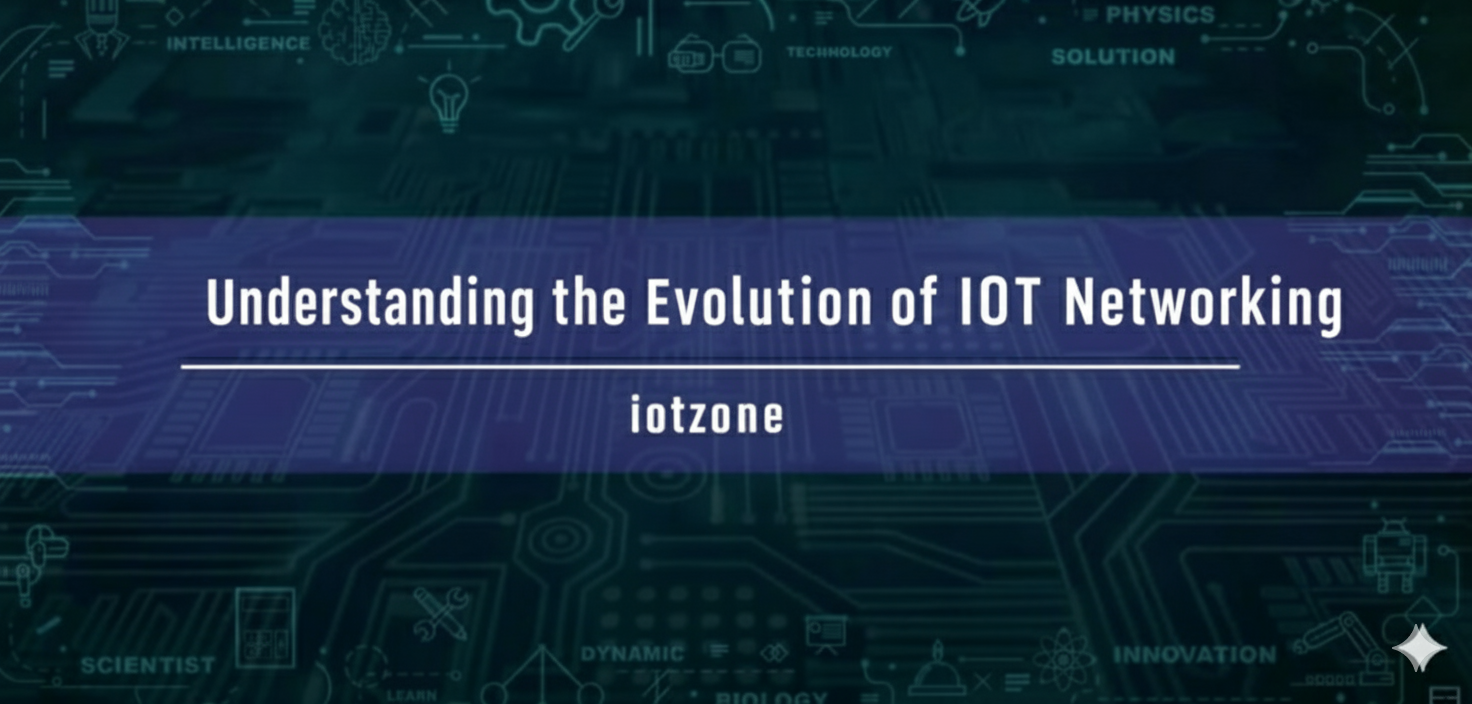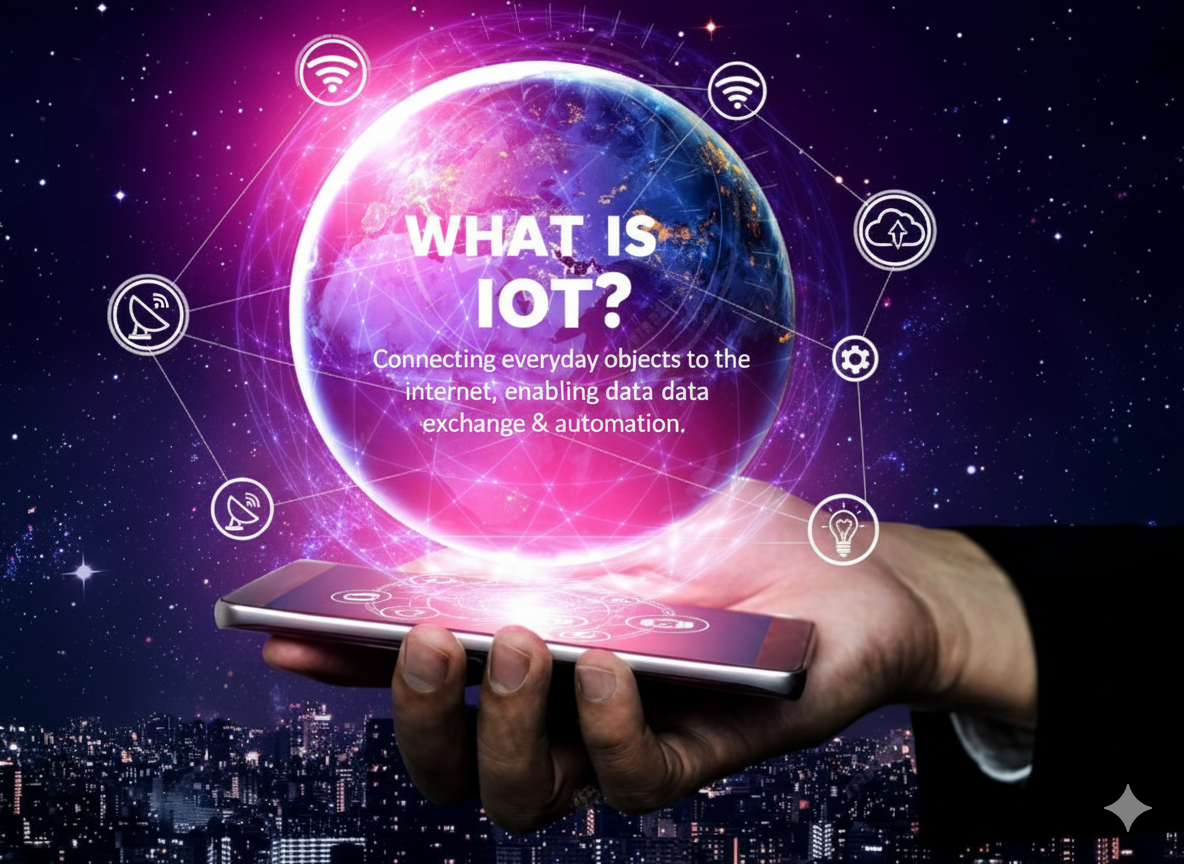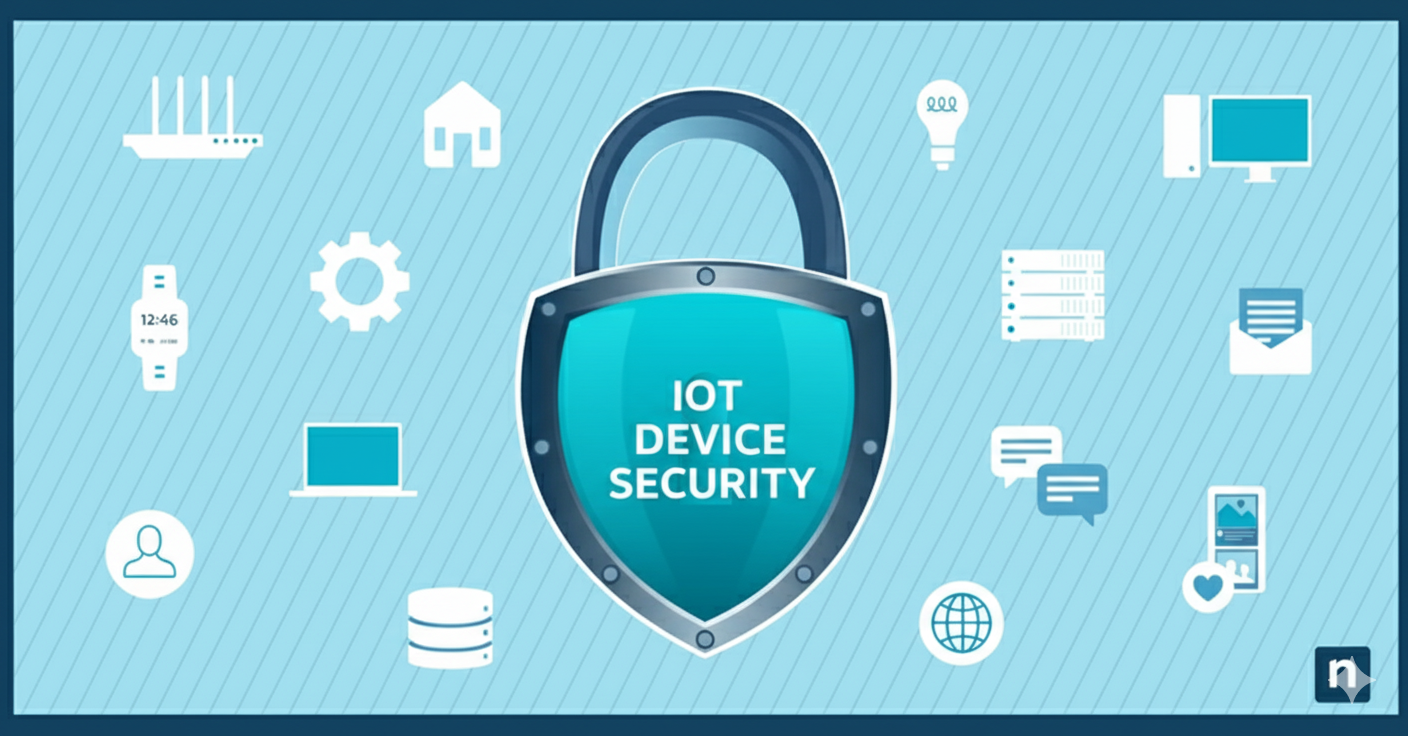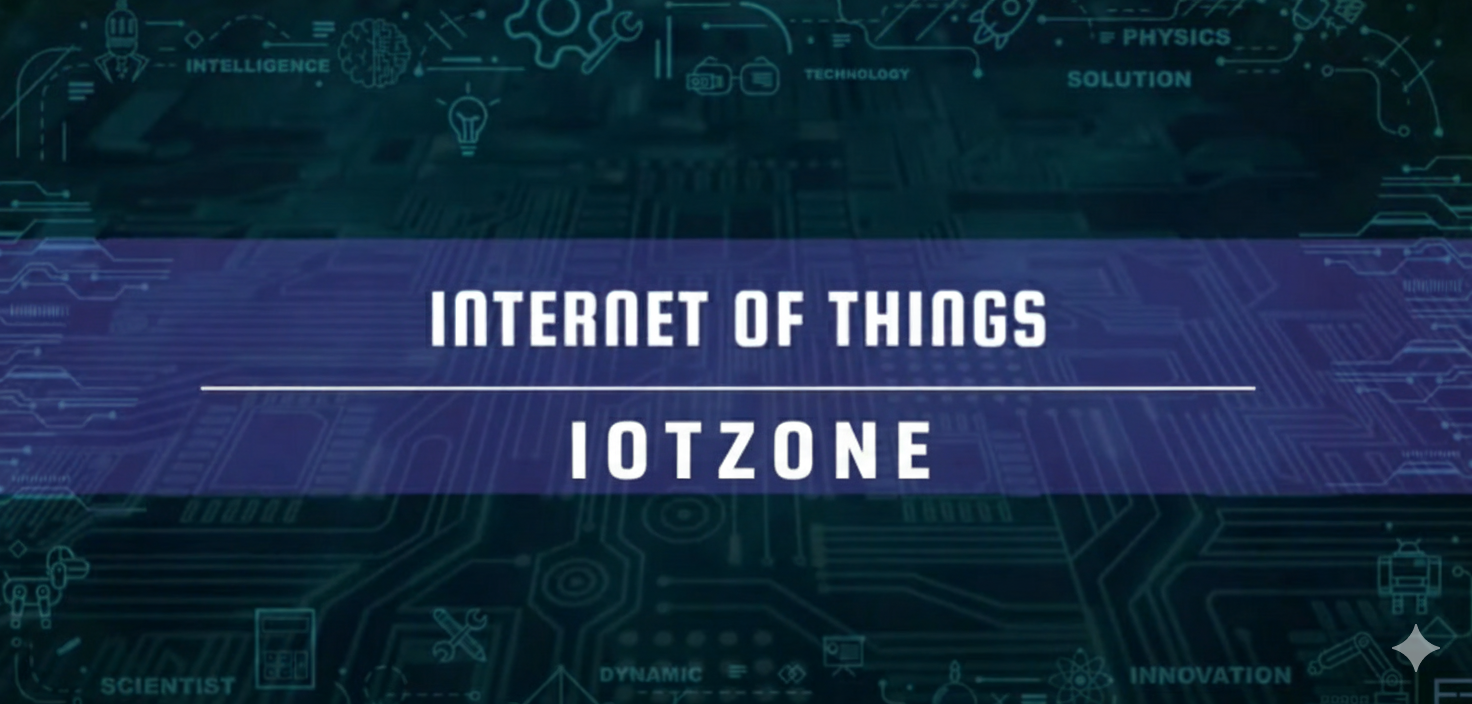Understanding the Evolution of IoT Networking

Overview
Understanding the Evolution of IoT Networking
IoT has transformed from basic research into a highly disruptive and sustaining technology. Initial innovations revolved around fundamental research in areas like nanotechnology and quantum communication. Quantum teleportation, for instance, refers to transferring information at the atomic level, opening new doors for the future of IoT networks. In addition to quantum communication, another key research area is semantic interoperability. For example, temperature sensors might output data using different terminologies—'temp,' 'temperature,' or 't.' Semantic interoperability is critical to making these diverse sensors work together seamlessly, ensuring that data from various devices is understood and processed correctly. Another essential development in IoT is energy harvesting. As IoT devices typically operate on minimal power, research into harvesting energy from renewable sources like solar or wind is crucial to sustaining these networks. Energy-efficient IoT systems depend on innovations that make it possible for tiny nodes to harvest power and remain operational in the long run.Disruptive and Sustaining Innovations in IoT
Disruptive innovations such as virtual reality (VR) and augmented reality (AR) have found their way into IoT applications, enhancing user interaction and data visualization. These technologies bring immersive experiences to various IoT-driven systems, from healthcare to smart cities. Meanwhile, sustaining innovations such as cloud computing and big data continue to shape the development of IoT. These technologies allow for vast amounts of data generated by IoT devices to be stored, analyzed, and utilized for real-time decision-making, creating a foundation for smart systems in industries ranging from agriculture to urban planning.IoT's Complex Network Architecture
At its core, IoT consists of devices or "things" embedded with sensors and actuators, which collect data about their surroundings and send it to other devices or systems. These IoT nodes are interconnected within a local network, and when the destination lies outside that network, the data is transmitted through the internet or a wide-area network (WAN). These sensor-equipped devices form the backbone of IoT networks. They collect information from their environment, such as temperature, humidity, or light, and transmit it to other devices or central processing units for analysis. The communication of this data can occur through various wireless technologies, including Wi-Fi, Zigbee, and Bluetooth.The Role of IoT Gateways in Network Communication
An IoT gateway plays a crucial role in the local communication of IoT networks. Each device within an IoT network is assigned a unique local address by the gateway. Once data is collected by these devices, it passes through the gateway and may be sent over the internet to backend services, including cloud platforms, for further processing. The gateway not only handles the addressing and routing of data but also performs additional functions such as protocol conversion, firewall management, and ensuring security. This makes it a vital component in the efficient operation of IoT systems.IoT Functional Components and Their Role
IoT networks are complex systems composed of various functional components, each contributing to the overall performance. Some of the key components include:-
Interaction: Devices in the IoT network interact not only with their environment (through sensors) but also with each other, exchanging data for better coordination.
-
Processing and Analysis: The data collected by sensors must be processed and analyzed. This can involve running complex algorithms and machine learning models to derive insights and take action accordingly.
-
Communication: Communication, particularly internet interaction, is a core component of IoT. Data must travel from local networks to the global network, often passing through the internet and web services.
-
Web Services and APIs: Machine-to-machine (M2M) communication is central to IoT. Devices interact with each other and share data through web services and APIs, enabling automated actions and decision-making.
-
Actuation: Based on the data received and analyzed, IoT systems can actuate physical devices such as pumps, lights, or HVAC systems. For instance, in agricultural IoT, a water pump can be turned on or off based on sensor data.
IoT Architecture: Layers and Components
The IoT architecture can be broken down into several layers, each serving a specific purpose:-
Sensing Layer: This layer consists of sensors and RFID tags that collect data from the physical world, such as temperature, pressure, or motion.
-
Network Layer: The network layer handles the transmission of data from the sensing layer to the next layers, either through local area networks or the internet.
-
Service Layer: The service layer includes the backend services that process the data, run analytics, and make decisions based on the collected information.
-
Interface Layer: This layer involves the human-machine interface, allowing users to interact with IoT systems through applications, dashboards, and APIs.
Consumer IoT vs. Industrial IoT
IoT can be categorized into two main types:-
Consumer IoT: These are IoT devices used by everyday consumers, such as smart thermostats, wearable fitness trackers, and home automation systems. Communication typically occurs within a local network, but can extend over the internet for remote control.
-
Industrial IoT (IIoT): In contrast, IIoT involves devices used in industrial settings, like factories and warehouses, where sensors and actuators are embedded in machines. These devices work together in a complex network to monitor and optimize industrial operations.
IoT Security: Privacy and Data Protection Challenges
Security remains one of the most significant challenges in IoT implementation. IoT systems are often comprised of resource-constrained devices with limited computing power and memory. This makes them vulnerable to various attacks, including data breaches, unauthorized access, and denial-of-service (DoS) attacks. Moreover, the vast amount of data exchanged in IoT systems raises privacy concerns. Personal information, industrial data, and sensitive location data are often transmitted across networks, which may expose users and organizations to privacy risks.Challenges in IoT Networking
As IoT continues to grow, several challenges must be addressed to ensure smooth operation:-
Scalability: IoT networks often consist of billions of devices, and ensuring that the network can scale to handle such a massive amount of data is a significant challenge.
-
Interoperability: IoT devices come from various manufacturers and use different protocols. Ensuring that these devices can communicate and function together seamlessly requires overcoming issues of interoperability.
-
Energy Efficiency: Since many IoT devices are battery-powered, finding ways to optimize energy consumption and implement energy harvesting techniques is critical for their long-term operation.
-
Data Storage and Analytics: With massive data generation from sensors, storing and analyzing this data efficiently is vital for deriving actionable insights.
-
Bandwidth Management: IoT networks often require large amounts of bandwidth, especially when transmitting data over the internet. Managing bandwidth and ensuring optimal performance is crucial for maintaining real-time operations.
Conclusion: The Future of IoT Networking
The Internet of Things is undeniably reshaping industries and daily life. As IoT technology evolves, the networks supporting these devices will become increasingly complex, demanding innovations in communication protocols, network management, and data analysis. By overcoming challenges related to security, scalability, interoperability, and energy efficiency, IoT networks will continue to enhance automation, decision-making, and user experience across multiple domains. The future of IoT is promising, with continued research and development pushing the boundaries of what these networks can achieve. As we progress through subsequent stages of IoT networking, understanding the underlying technologies and overcoming the complexities of IoT implementation will be key to unlocking the full potential of this transformative technology.Administrator
Frequently Asked Questions
Common questions about Understanding the Evolution of IoT Networking. Find answers to the most frequently asked questions.
User Reviews & Comments
Share your experience with this IoT Blog. Your feedback helps our community make informed decisions!
Share Your Experience
Help others by sharing your thoughts about this IoT Blog.
Related Blogs
Explore more IoT Blogs in the same category

What is the Internet of Things (IoT)?
Tutorials
The Internet of Things (IoT) connects everyday devices to the internet, enabling smart homes, healthcare, farming, and industries with automation, real-time monitoring, and data-driven insights.

IoT Security Risks and How to Protect Your Devices
Tutorials
Learn how to secure your IoT devices at home and office, reduce cyber risks, and protect privacy with best practices for a safer connected world.

IoT Components: Working of IoT, Sensors & Actuators, Role of IoT, IoT Cloud, IoT Analytics
Tutorials
Explore IoT components, working, sensors, actuators, IoT cloud, and analytics. Learn how IoT transforms data into insights, connecting devices for smarter and efficient solutions.
No Reviews Yet
Be the first to share your experience with this IoT Blog!